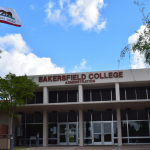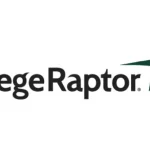For so many students – especially first-generation students and students from low-income families – completing the Free Application for Federal Student Aid (FAFSA) is a key part of unlocking access to college.
Recent statistics from the National College Attainment Network suggest that access to college has been hindered during the pandemic, as 16% fewer FAFSAs were completed in 2020 compared to 2019. The decline was even greater at high schools with at least 40% low income families.
Declines in FAFSA completion are a leading indicator of pending college enrollment. According to the National Center for Education Statistics, there is a 30% decrease in the probability of enrolling in a 4-year program for those that decide to defer a year after high school.
The declines in FAFSA completions are creating significant uncertainty and challenges for colleges and universities. There’s pressure from all angles: global, state, institutional, and from students. Two are inputs; two are outputs. They’re all leaning on each other, and the connections make it unsustainable.
Here is what we are seeing:
Input 1: The Economic and Practical Impact on Students from the Global Pandemic
The global pandemic has significantly disrupted families. The tumult and economic fallout from the shutdowns led to a surge in unemployment and a focus on financial survival for many.
Input 2: Remote Learning has an Unproven Value Proposition for Full-Time Learning
Colleges have been limited in their ability to provide in-person instruction. Residential colleges have seen the on-campus experience disrupted, undermining a key value for their institutions. The value proposition for online learning is uncertain for many students. If you are uncertain something presents value for you, you may choose to postpone making the investment.
Output 1: Decline in FAFSA Completion Leads to Less Public Funding
For many public institutions, FAFSA completion rates impact funding formulas. As enrollment numbers decline, so does the investment flowing to schools. This, in turn, means fewer dollars for student support.
Output 2: Institutional Budgets Shrinking
Many colleges are now servicing fewer students, which shrinks institutional budgets. This, in turn, impacts the level of service a college can offer its students.
What can be done to break the cycle?
There is no silver bullet here. These are extraordinary times. But if there was ever an opportunity to reassess how the institution attracts students and supports them in completing the FAFSA, now is the time.
Increasing Proactive Outreach to Help Students File the FAFSA
Because financial aid plays a critical role in enrollment, retention and completion, helping students file the FAFSA and encouraging them to attend a group or individual session can impact numbers for admissions and student success. Proactive outreach via text is an effective, low cost way to drive these efforts. Students have cell phones. Timely texts using a reasonable cadence are a great way to “cut through the white noise” and get students’ attention.
Going from Triage to Stability
So many Financial Aid offices are somewhere on the spectrum between “triage” and “stabilize”, a framework described by Huron Consulting. Many colleges have strong “Institutional Planning Priorities”, which suggests schools are trying to be more strategic and forward thinking. But too often, “Student Communication Priorities” are reactive.
“Triage” means just maintaining momentum. Let’s just keep traffic flowing. And often with the limited staff resources available, that’s all a school can do.
But once a college can get to a “Stabilized” state, the institution may find that it has more control over not just the volume of traffic but how educated the students are when they’re coming to staff with questions.
Staff will find fewer students asking repetitive questions that start with “What is…” or “How do I…”. Instead, staff is planning ahead to ensure the student is successful in completing the FAFSA. Indeed, the staff is focused on setting the student up for success across the entire student journey.
Onward to Transformation…
Ultimately, in the Huron framework, to transform means that you’re forming the student experience. You’re helping Admissions drive recruiting. You’re proactively reaching out to students with answers before they even know what questions to ask.
For many college administrators, some of this may sound like a pipe-dream. But that’s where technology can help. Technology can enable the institution to be more informed and effective at recruiting and ultimately driving greater student success. It’s a place where the college can leverage the skills and time of the staff to better help students.
Technology should never replace the human touch, but the more personal-touch technology can be integrated into outreach and support, the more effectively staff can reach the students who need it most. Ultimately, this can mitigate some of the challenges posed by the current decline in FAFSA completion rates.
The Wrap
The pandemic is causing considerable stress around enrollment. A focus on FAFSA completion is one way to respond. Technology such as texting can help. There is an opportunity to take some time to explore new approaches and innovations as they could transform how your institution supports students through the enrollment process. You may find that the changes result in a better experience for students — and a better way to promote enrollment and student success.















